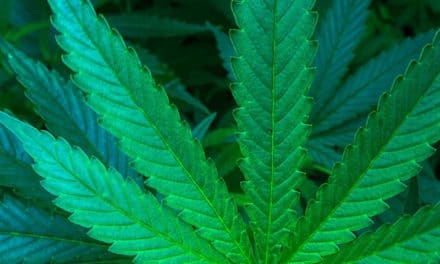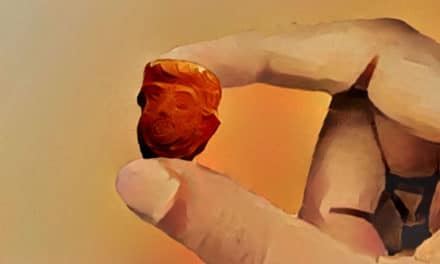
DMT, or dimethyltryptamine, is a fast-acting, potent psychedelic. It is pictured here in crystalline form. |Image Source: Wikipedia
“It is so important for us to understand consciousness. It is just as important to place psychedelic drugs in general, and DMT in particular, into a personal and cultural matrix where we do the most good, and the least harm.”
– Rick Strassman, MD, and author of DMT: The Spirit Molecule
What IS DMT? Naturally Occurring DMT and Its Effects
DMT, or dimethyltryptamine, is a naturally occurring psychedelic compound of the tryptamine family. It instigates a very quick and extremely powerful psychedelic experience. The hallucinogenic state is very short-lived, generally no longer than a few minutes. DMT occurs naturally in the human body, and, in fact, in every living being. Researchers have reported finding DMT in the pineal gland of rodents, which has led to the widespread belief that DMT occurs in the human pineal gland as well, although that belief is speculative and not supported by clinical evidence at this time.
However, clinical research by doctors such as Rick Strassman, author of DMT: The Spirit Molecule, continues to explore the potential of DMT. Strassman’s research has probed not only into the biological occurrence of DMT, but it’s psychological effects and potential benefits for society.
Dr. Strassman’s Clinical and Psychological Research
While working as a tenured associate professor in the Psychiatry Department at the University of New Mexico’s School of Medicine, Strassman delved into an extensive body of DMT research, supplying 400 DMT doses to 60 human subjects, all of whom volunteered for the research. Strassman’s open-ended questions resulted in very open-ended answers: although he admits that DMT “has no beneficial effects in and of itself,”[1.”Rick Strassman MD.” Rick Strassman MD. Accessed December 30, 2015. https://www.rickstrassman.com/index.php?option=com_content&view=article&id=54&Itemid=54.] he also advocates the idea that DMT can help us to access mystical states and parallel universes that only the mind can unlock. He also conjectures that the developing human fetus releases DMT from the pineal gland at 49 weeks and that it’s at this time that the soul enters the developing child.
Despite the undeniably intriguing hypotheses that drive research like Dr. Strassman’s, and the experiential evidence of its benefits, opponents to legalization and research into DMT have made it difficult, if not impossible, to conduct the necessary experiments to expand our knowledge of DMT and its potential uses.
Potential Opposition to Legalization and Research
DMT is currently listed as a Schedule I Drug in the United States,[2. “Schedules of Controlled Substances,” Food and Drug Administration, revised April 1, 2015, https://www.accessdata.fda.gov/scripts/cdrh/cfdocs/cfcfr/CFRSearch.cfm?fr=1308.11.] although there are exceptions for religious uses such as the Christmas ceremonies performed by the Brazilian religious community of the União do Vegetal. The União do Vegetal uses a hoasca tea that contains DMT for religious rituals and was granted exemption from the US Schedule of Controlled Substances Act for their tea.[3.”Frequently Asked Questions,” União do Vegetal in the United States, accessed December 30, 2015, https://udvusa.org/faq/.]
Strassman himself conjectures that many interest groups may oppose the hypotheses that he drew from his DMT research at the University of New Mexico, including the following:
- Drug control advocates may oppose the ingestion of psychedelics, even in controlled or clinical trials.
- Psychedelic proponents may oppose the assertion that DMT might not be found to have long-term clinical or therapeutic uses.
- Traditional religious groups may oppose the idea that psychedelics can induce mystical or spiritual experiences.
- Abortion rights advocates may oppose the idea of DMT as proof of the soul in developing fetuses.
- Neuroscientists may oppose the legitimacy of the subjective realities that are experienced in psychedelic states since these experiences are outside of the traditional realm of brain research.
Unanswered Questions and the Future of DMT
Despite political pushback, the mysterious potency of DMT is sure to continue to generate public dialogue well into the future as research progresses. One of the most intriguing properties of the psychedelic is its theorized relationship with death: Strassman has proposed that as the body crosses over into death or slips into a dream state, DMT is released. This could explain some of the angelic apparitions that survivors of near-death experiences report seeing, especially considering that many of the volunteers in the original DMT study reported interacting with humanoid but inhuman forms while in a DMT-induced psychedelic state.
In order to accurately answer the many questions that remain in the field of DMT research and be able to situate the psychedelic within the “personal and cultural matrix” that Strassman advocates, the scientific community will need to delve much more seriously into clinical trials and garner public support. Until then, public opinion of DMT will be largely based on philosophical musings and experiential conjecture.










Hey man, I’m really dinggig the site. Just reading that article with Strassman really brought back some of that hidden knowledge that gets transmitted directly to yr pineal gland from Eris herself when you ingest say, 4 hits of acid and a bowl of salvia .Also, I was wondering if you’d be interested in collaborating at all, as I’m the editor of Dose, an upcoming e-zine started by the members of the community Chemphoria. And frankly, the stuff you write about is right up our alley Let me know what’s up.And once again, nice blog.-rizzo
The idea that abortion rights advocates would oppose DMT use because of a soul in the fetus argument is somewhat ludicrous. Doesn’t seem that a hallucinogen (even of this magnitude) would provide any evidence to the idea, although I suppose a much greater representation of the psyche might be apparent to many. Actually, the reason I think it should be legal for the general public to seek this medicine would be specifically to help promote a more detached attitude towards birth, by helping to loosen the constraints provided by religious dogma that insists that our only real purpose in life is procreation for our given race. This is what is precisely happening in the Middle East with Islam.
@Camden Marshall Andersen I like your approach